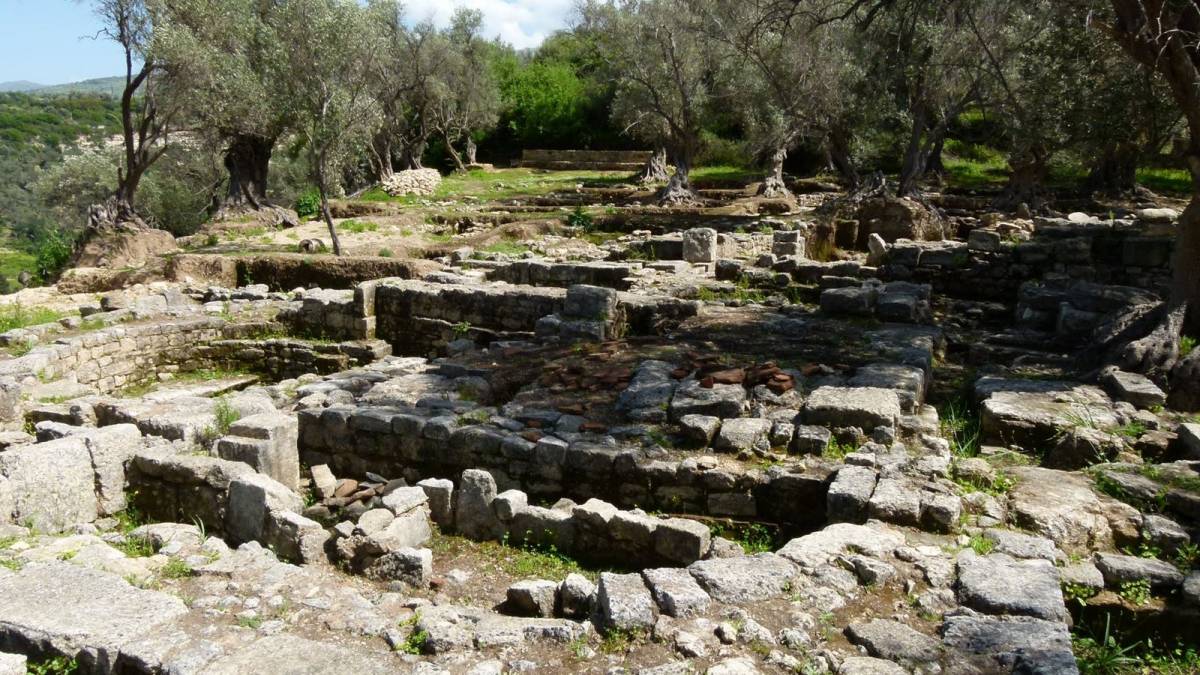
- The archaeological site of Ancient Eleftherna is located 24 kilometers southeast of Rethymno and is the most important archaeological site in the prefecture of Rethymno.
- Eleftherna was inhabited from 3000 BC. to 1300 AD. The excavations have brought to light extraordinary finds, objects of art and daily life, of various chronological phases, the Prehistoric, Geometric, Archaic, Classical, Hellenistic, Roman and Byzantine eras. Eleftherna flourished during the Iron Age. (from 900 to the beginning of the 5th century BC).
- An entire district with houses built in 400 BC. and a propylon and a sanctuary precinct were excavated on the Nisi site.
- Baths, villas and public buildings were built during the Roman period.
- In the Byzantine Period, Eleftherna became the seat of the Episcopate, the three-aisled early Christian Basilica church of 430-450 AD was built, it was destroyed in the 7th century AD.
- An earthquake in 365 AD, Arab raids and another earthquake in 796 A.D. gradually led the city into decline.
- A necropolis of the Geometric and Archaic times has come to light at the site of Orthi Petra.
- Four skeletons of three princesses, aged 13, 16, and 28, and an old woman were found in a mass grave, their mounds facing the east with the youngest one first.
- Also, here, the unique female burial pyre was found, the first monument to the Unknown Soldier, the grave of the unfortunate Nymphs from Cyprus, whose DNA testifies to their kinship, and the grave of a 12-year-old boy with his dog.
- The museum was inaugurated in 2016 and focuses exclusively on the surrounding archaeological site. There are very important exhibits, such as the shield that protected the bones of the warriors, the daughter of Eleftherna, a 51 cm sculpture of 650 BC. which is related, macroscopically and microscopically, to the Lady of Auxerre in the Louvre Museum and the cremated grape that was saved as a whole.
- In the archaeological park, dirt and stone paths connect the excavation sites. There are dozens of aromatic plants, mint, basil, lavender mint, cloves, etc. and cypresses, carobs, pomegranates, oaks and oleanders. The sculpture-like olive trees of the park have been designated Natural monuments and are protected. Different trees lead to different places, e.g. the Almond trees lead to the necropolis and the Cypresses to the museum.
- The site gathers, daily, all year round, 800 visitors from all parts of the world.
- In the wider area there are places and villages of exceptional beauty and cultural interest, such as the Holy Monastery of Arkadi, the Holy Monastery of Agia Irini, the village of Margarites and the cave of Melidonion.
(More articles about Crete on www.gomega.gr)